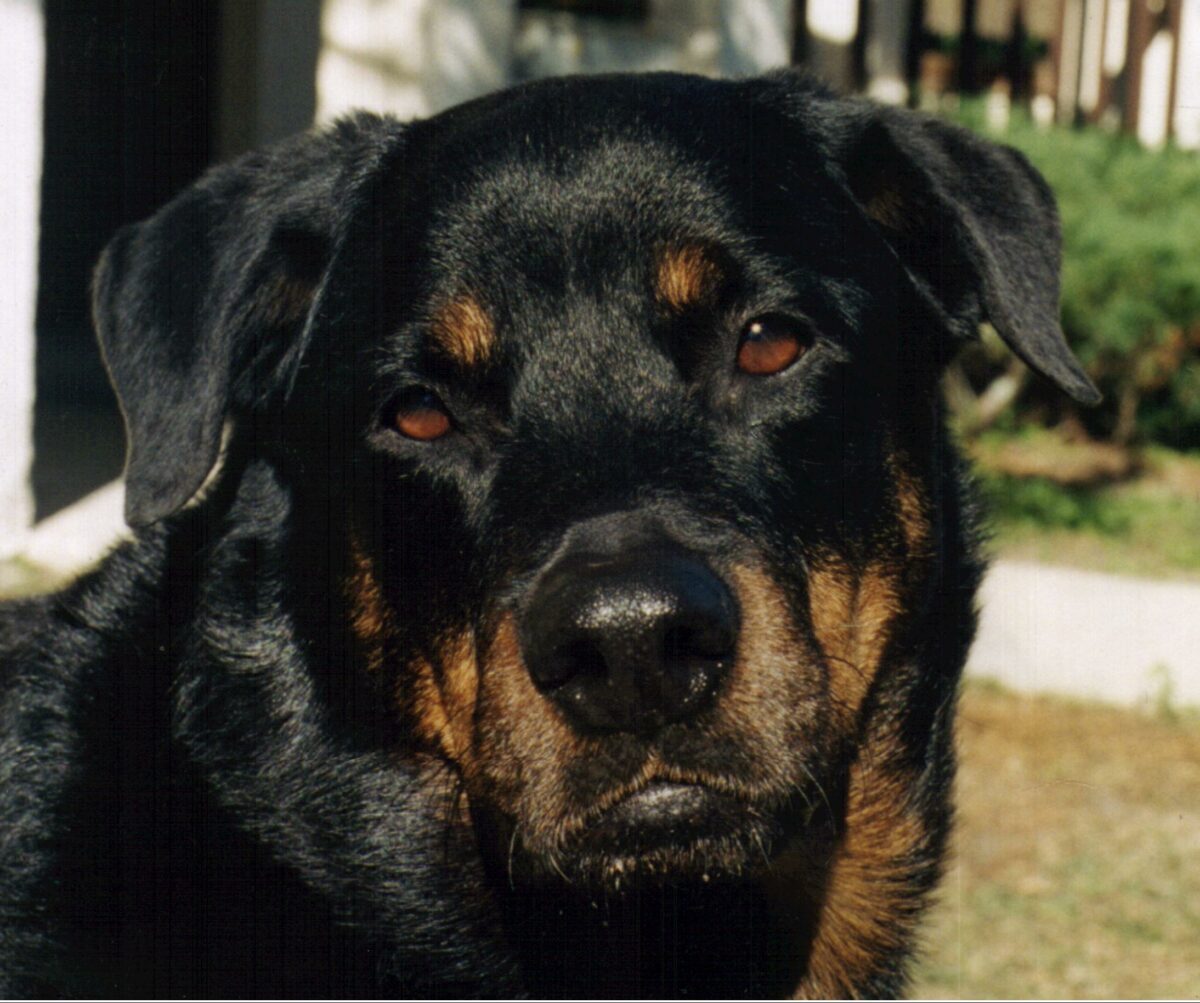Years ago, I adopted a Rottweiler we named Peanut. I remember the first time she growled at me over an object. It was a treasured bully stick. I was approaching her and had yet to even reach for or talk to her. I remember feeling insulted that she would respond to me that way. After all, I had adopted her when no one else would, even though she had several failed adoptions and a known bite record. I knew enough to walk away and give her space, but it still hurt.
Even though I had made it personal, to Peanut it was not about me. It was about the tsunami of anxiety raging inside her. Since that time, I have treated thousands of patients with what is now called possessive aggression. Just like Peanut, with appropriate treatment almost all have responded well.
How Did We Get Here?
According to one study, 50 percent of dogs exhibit possessive aggression. Peanut was not alone! Aggression around objects is a normal behavior that can become abnormal. If you have watched dogs interact, you have seen them growl or posture toward each other when valuable objects are nearby. Usually, these skirmishes resolve without much fanfare. But in anxious, fearful, or stressed dogs, the aggression can appear more intense, irrational, and out of context.
Some dogs growl only over brand-new toys, while others only become aggressive over a found item. For Peanut, it was every bully stick, but never a tennis ball. Dogs are individuals, and they will not be in agreement as to what is worth fighting for and what is not. The target of the aggression might also vary. They might be aggressive toward only one person, certain dogs, or every person or animal they encounter. When your dog tries to keep something, she is expressing that she feels stressed and that this object is important to her.
It is suspected that there is a heritable component to most anxiety disorders, including aggression over objects. This makes sense considering that many puppies exhibit this behavior. Unfortunately, mild expressions of anxiety around objects, such as lowering the head, moving away, and grabbing objects more tightly, often go unnoticed until the dog is between 1 and 3 years old, when more overt signs such as growling and biting occur. In some dogs, possessive aggression can develop later in life due to administration of medications, development of systemic disease, or neglect.
What You Can Do
You can’t change your dog’s DNA, but you can change your environment, your behavior, and the behavior of other pets in the household. Pet parents often make the behavior worse by acting aggressively themselves! They chase their dog around the house, prying the dog’s mouth open or holding the dog down in attempts to retrieve an object. If I had done any of these things to Peanut, she most certainly would have bitten me on the spot! Through these types of inappropriate interactions, the dog learns that fearful body postures and avoidance are not effective in stopping the pet parent from being physical and taking her things. The natural progression is to growling or biting which they quickly learn is an effective way to keep valuable items.
If your dog is growling, lunging, snapping, or biting over items, get help! As with any change in behavior, the first step is to visit to your family veterinarian for a checkup. Ask your veterinarian for a referral to a board-certified veterinary behaviorist or search for one at www.dacvb.org. Also, check out the “Ditch This” section below for actions you can take immediately to help your dog.
If your dog isn’t at the point where he is showing aggression or you want to prevent him from developing aggression over objects, the tips below can help!
Do This
- Teach your dog that when you approach, your intentions are good.
- When you see your dog with an object, even if it is one that isn’t that valuable, don’t approach! Stand five feet or more away and toss a tasty treat. Then walk away.
- Teach your dog to trade up.
- When your dog has an object you need to get from her, take a handful of very exciting and tiny treats (1/4-inch in diameter) and make a treat trail (a line of treats about 2 to 3 inches apart and about 3 feet long). Then when your dog is busy eating, pick up the item. **Don’t lean over your dog when you trade up.
- Let your dog enjoy her stuff in peace.
- After all, it is her stuff, right? If she has an object that is hers and it won’t harm her to keep it, leave her completely alone with it. Don’t approach at all.
- Teach drop it or leave it using positive reinforcement methods.
- By teaching these simple and easy-to-train cues as soon as you get your dog regardless of age, your dog will understand how to give things back to you.
- Learn your dog’s language
- Most of the ways dogs communicate with us and with each other is via body language. You might be surprised to know that most pet parents can’t accurately identify dog body language signals. You can find out more at www.fearfreehappyhomes.com.
- Pick up after yourself
- Closing doors and picking up items your dog might steal are easy ways to avoid situations in which your dog might feel possessive over an object.
Ditch This
- Chasing your dog.
- Chasing your dog around the house only makes the behavior worse.
- Getting physical.
- Pushing, pulling, prying, yelling, or holding your dog down will weaken your dog’s trust in you. If you are aggressive, your dog will be, too.
- Hand feeding.
- Hand feeding your dog won’t make her less aggressive, but it may cause her to be overly reliant on you, and if she has anxiety over food it will very likely make that worse.
- Touching or approaching your dog when she has items or is eating a meal.
- Do you like to be hugged while you are eating or have your plate taken away? Of course not! Then don’t do it to your dog.
- Stealing.
- That’s right, when you gave that toy to your dog, it was a gift to her. Don’t take it back randomly or suddenly. Unless it is a danger to your dog, it is your dog’s to enjoy.
If your dog is worried about her stuff being taken away, there are tons of things you can do to help her live her best life. What are you waiting for?
This article was reviewed/edited by board-certified veterinary behaviorist Dr. Kenneth Martin and/or veterinary technician specialist in behavior Debbie Martin, LVT.
Dr. Radosta graduated from the University of Florida College of Veterinary Medicine in 2000. She completed a residency in Behavioral Medicine at the University of Pennsylvania. During her residency, she was awarded the American College of Veterinary Behaviorists Resident research award two years in a row. Dr. Radosta is the owner of Florida Veterinary Behavior Service, a specialty behavior practice in southeast Florida and co-owns Dog Nerds, an online educational resource for owners whose pets have behavior disorders.
This article is brought to you in collaboration with our friends at Blue Buffalo Pet Food.









